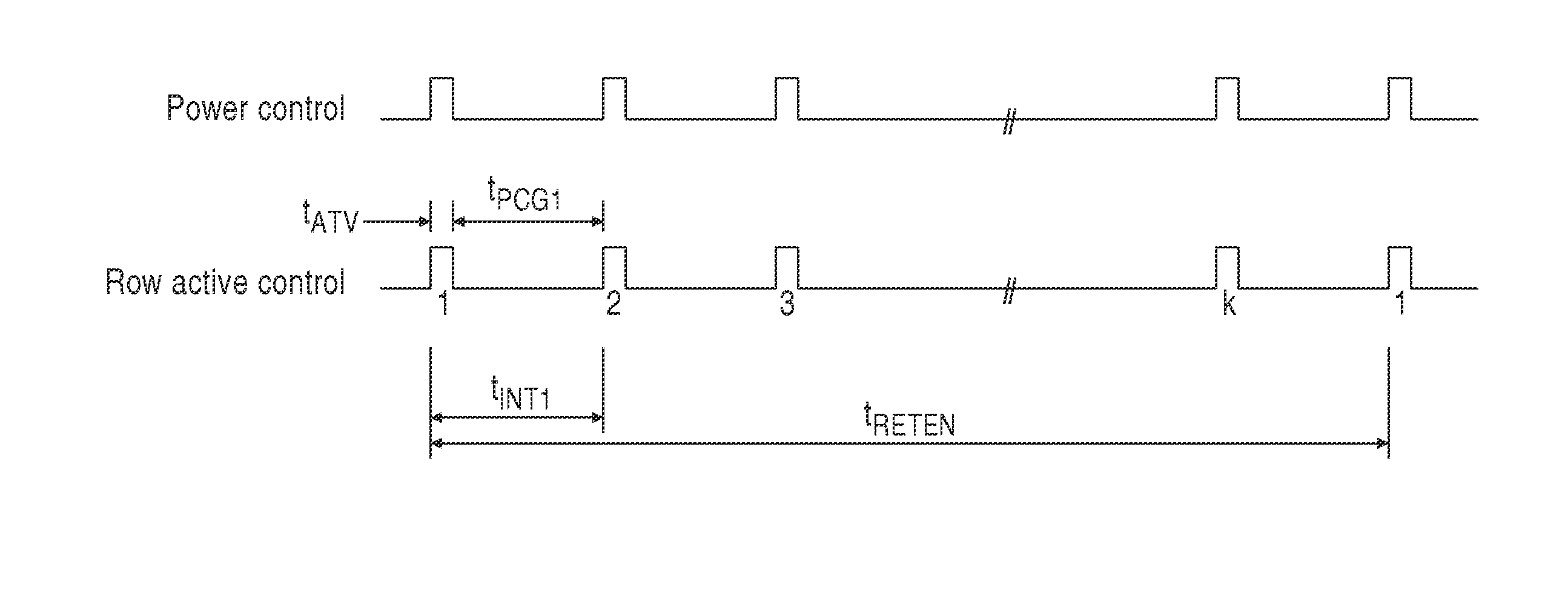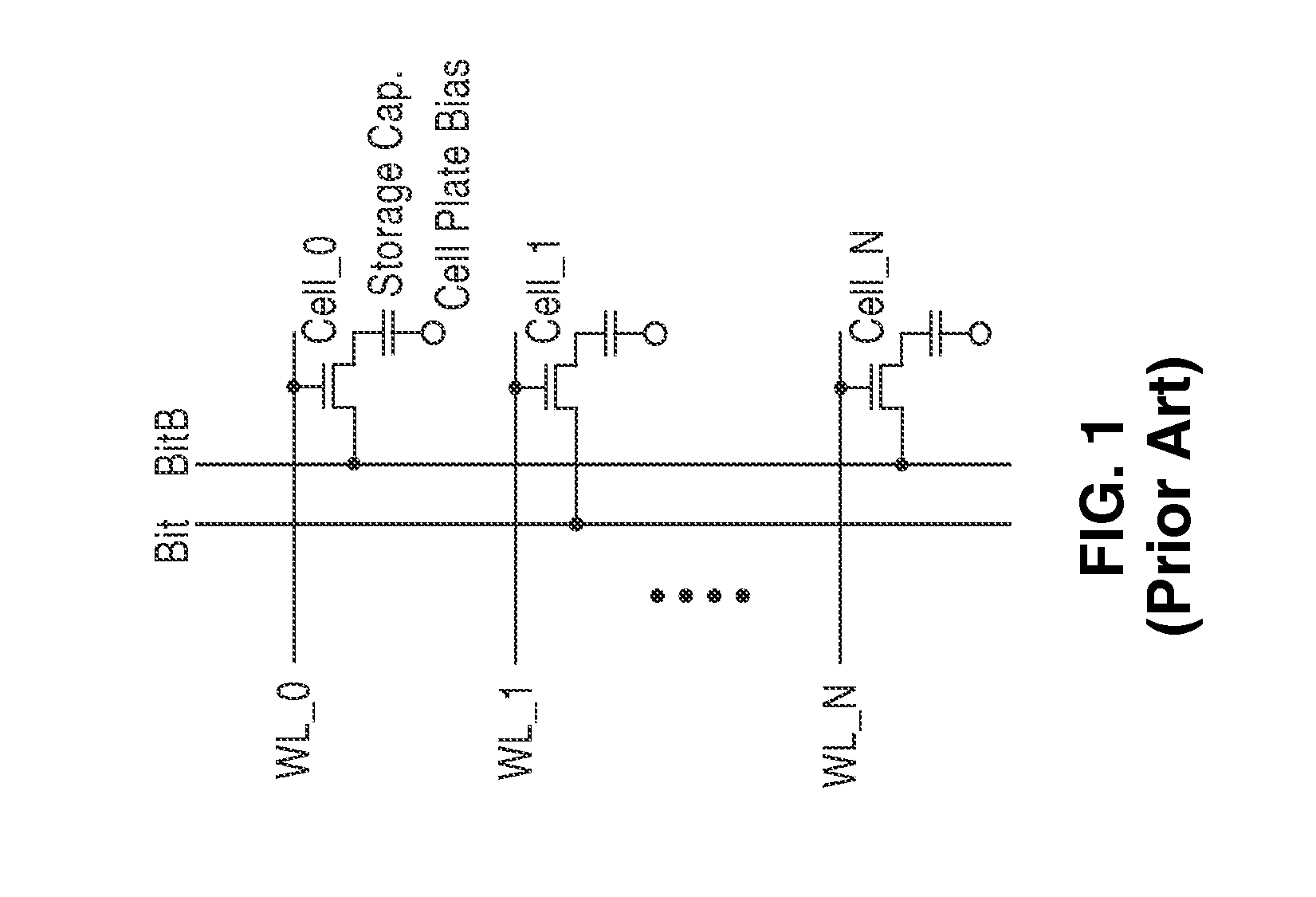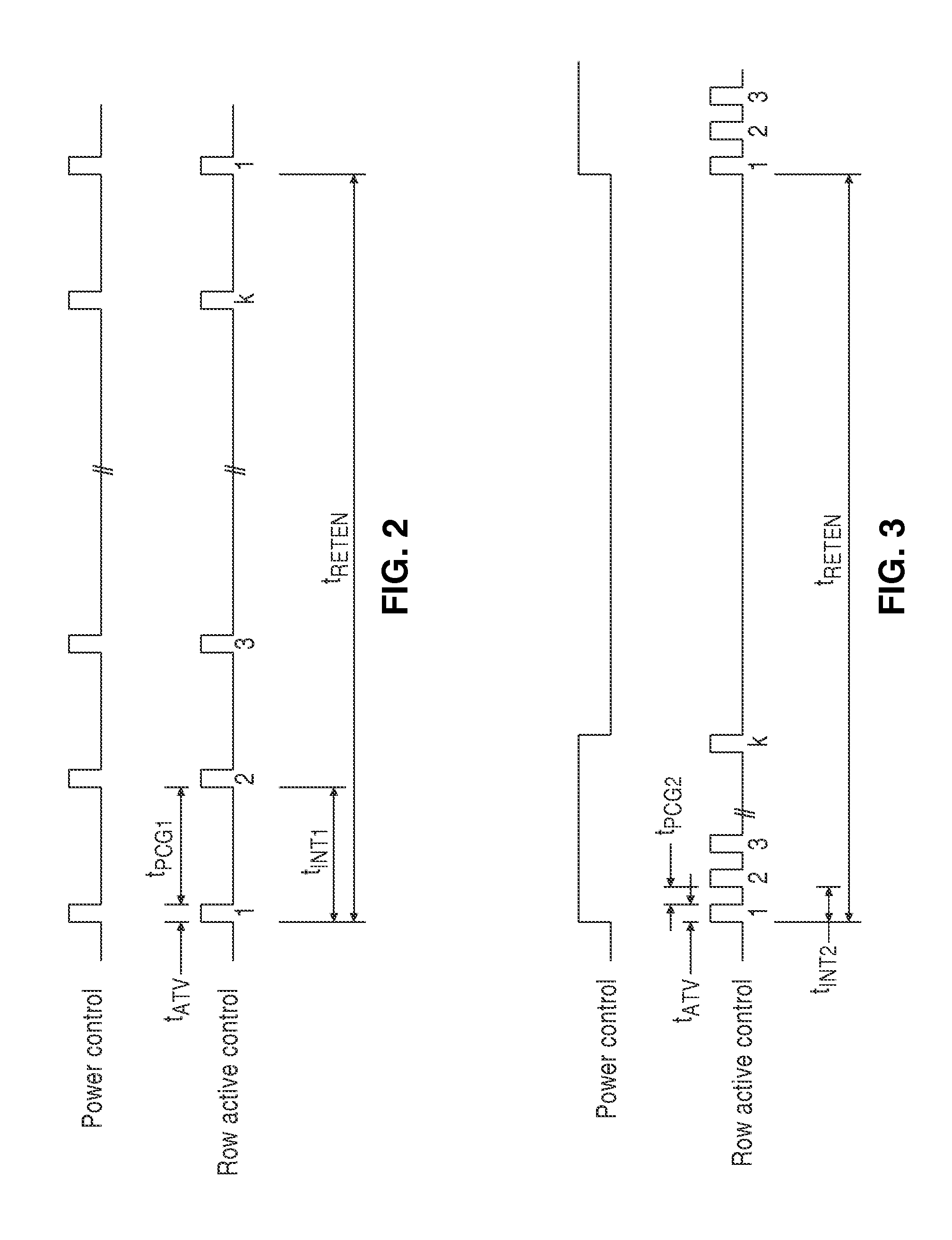Dynamic memory refresh configurations and leakage control methods
a dynamic memory and refresh configuration technology, applied in static storage, information storage, digital storage, etc., can solve the problems of low factory yield, insufficient retention time, and certain portion of memory storage cells that do not function properly, so as to reduce power switching losses within dynamic memory, enhance dynamic memory characteristics, and reduce leakage
- Summary
- Abstract
- Description
- Claims
- Application Information
AI Technical Summary
Benefits of technology
Problems solved by technology
Method used
Image
Examples
Embodiment Construction
[0064] Referring more specifically to the drawings, for illustrative purposes the present invention is embodied in the apparatus generally shown in FIG. 2 through FIG. 15. It will be appreciated that the apparatus may vary as to configuration and as to details of the parts, and that the method may vary as to the specific steps and sequence, without departing from the basic concepts as disclosed herein.
[0065] 1. Grouping of Refresh Cycles.
[0066] A DRAM cell, in absence of any intervention, loses its stored bit information as charge escapes through leakage paths. Therefore, data must be periodically rewritten to the cells in a refresh operation in order to maintain the stored information. In a refresh operation data is read from the cell and then the same data is rewritten into the cell thus recharging the charge storage element (e.g., capacitor), for example to an initial (full) level of charge for a “1” state, or fully depleting it for a “0” state. The present invention is more pa...
PUM
 Login to View More
Login to View More Abstract
Description
Claims
Application Information
 Login to View More
Login to View More - R&D
- Intellectual Property
- Life Sciences
- Materials
- Tech Scout
- Unparalleled Data Quality
- Higher Quality Content
- 60% Fewer Hallucinations
Browse by: Latest US Patents, China's latest patents, Technical Efficacy Thesaurus, Application Domain, Technology Topic, Popular Technical Reports.
© 2025 PatSnap. All rights reserved.Legal|Privacy policy|Modern Slavery Act Transparency Statement|Sitemap|About US| Contact US: help@patsnap.com



